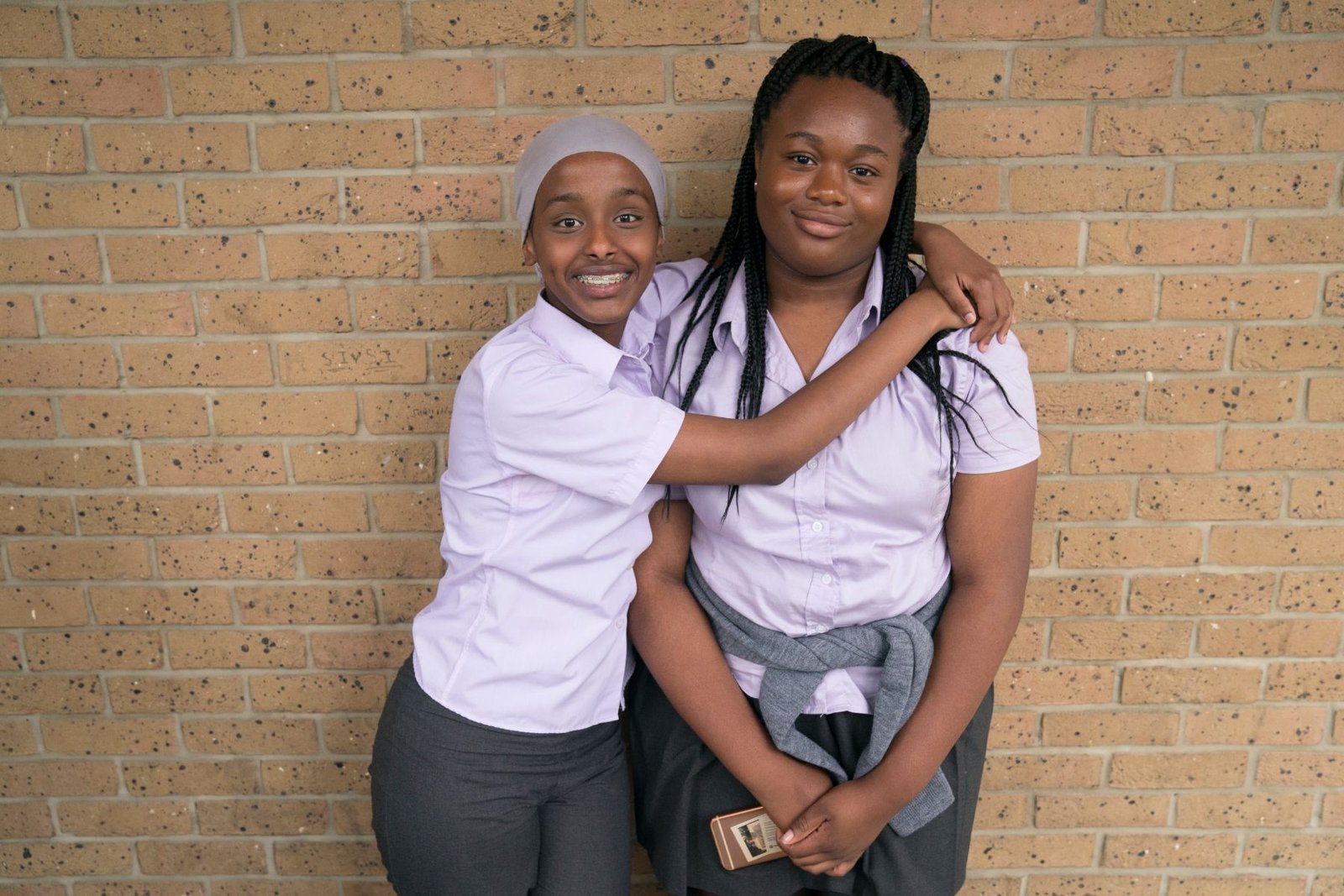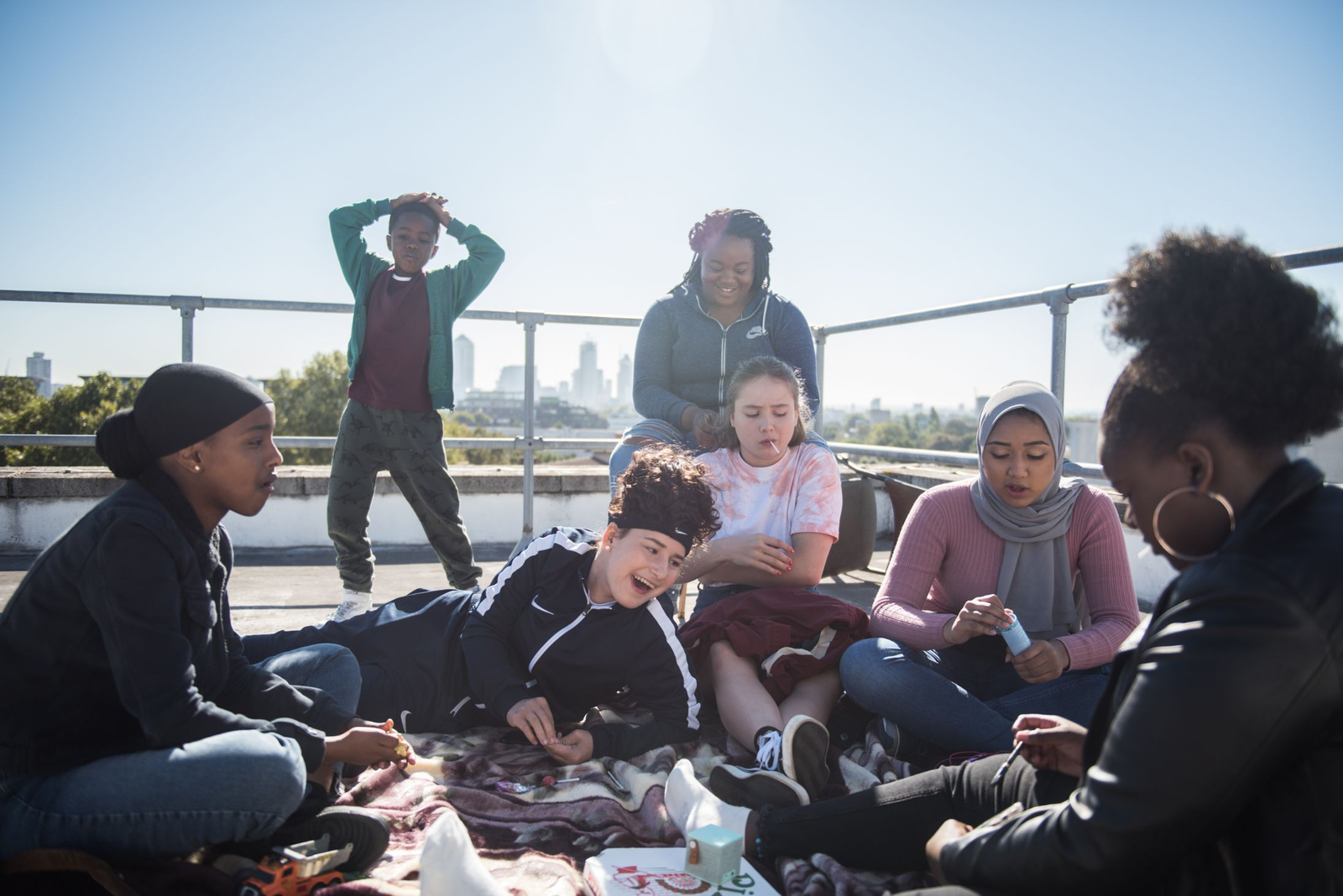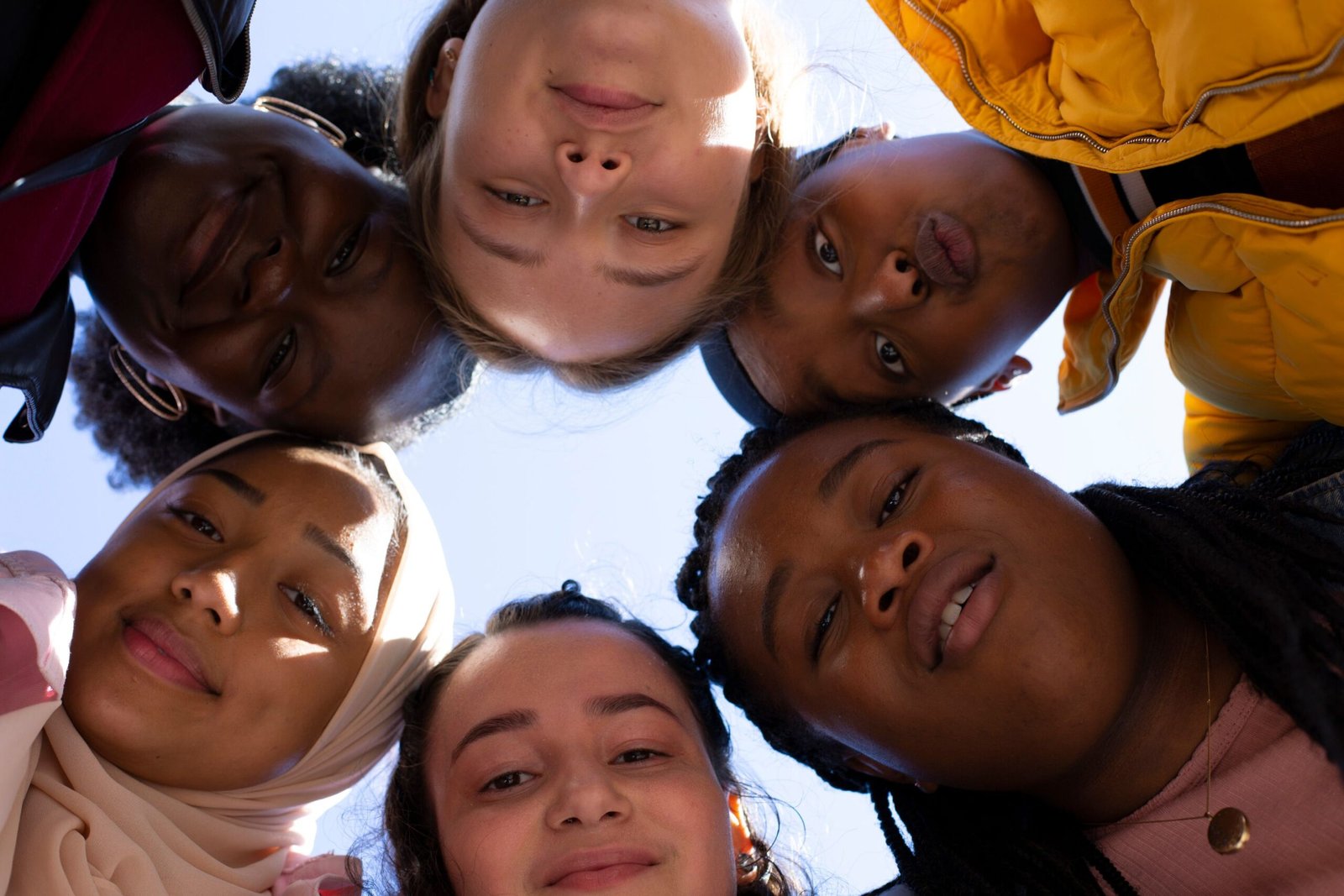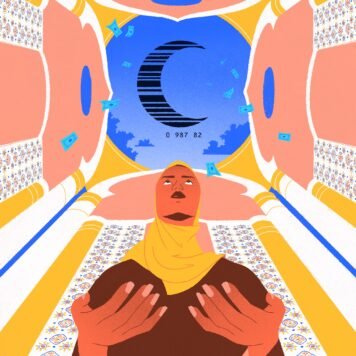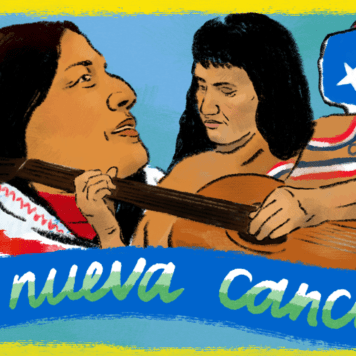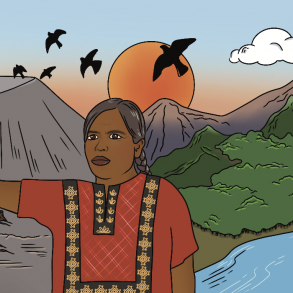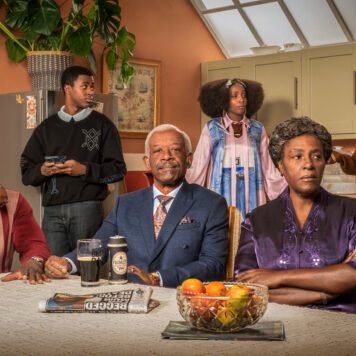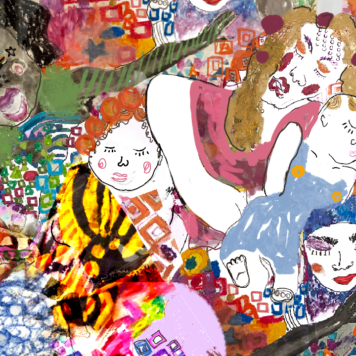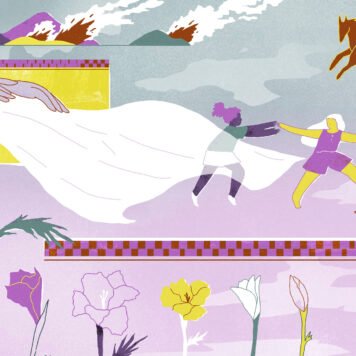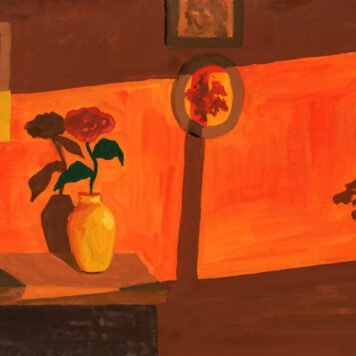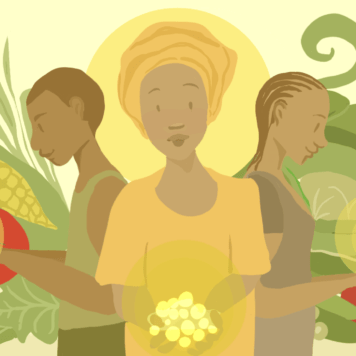If you haven’t heard of the film Rocks, you must have been living under one. A touching and empowering feature, it’s a refreshingly accurate coming-of-age tale, following the story of 15-year-old Rocks (Bukky Bakray) as she tries to provide for herself and her little brother in the wake of her mother’s disappearance. What makes this film so important is the real way in which it is told; the girls depicted are simultaneously relatable and diverse, offering an accurate representation of life in a secondary school in East London.
This raw representation is supported through the creative process; workshopped over a series of months, the film was made with and by the girls that are depicted in it. This feeling of reality is further helped along with a script comprised of dialogue and improvisation and the use of a handheld camera and Iphone footage. It’s an inclusionary masterpiece and one which deserves to escape the fate of many straight to streaming film releases that have dominated this year. Luckily enough, it has done, first by being shown at a number of independent cinemas on the 18th September followed by a release on Netflix and now today is it’s release date at 75 Odeon cinemas around the UK, giving you the chance to see the girl’s larger than life personalities, on the big screen.
shado caught up with director Sarah Gavron and Associate Director Anu Henriques to discuss how the film was made, the societal pressures for young women of colour and what messages they hope audiences will take away.
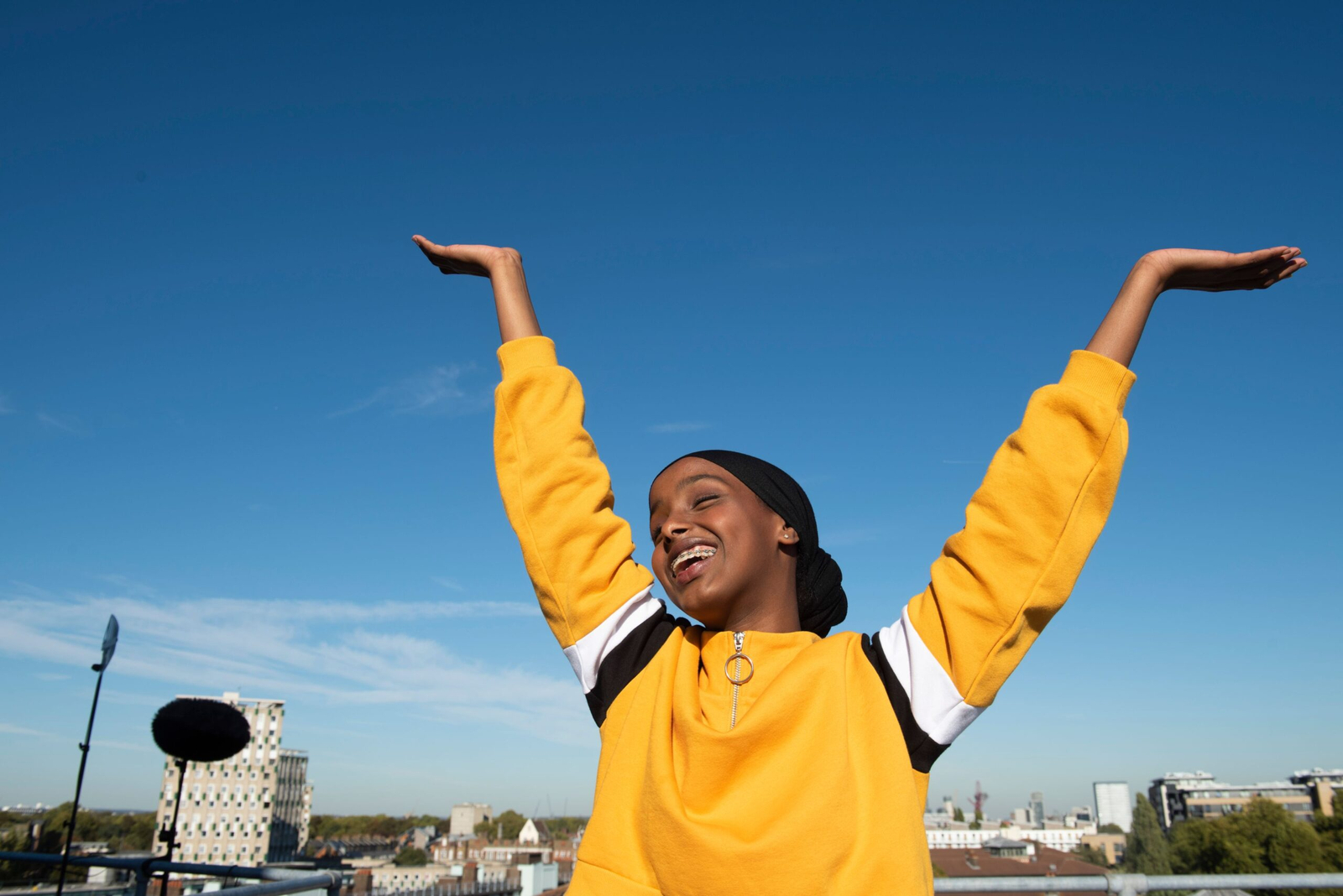
How did you get involved in the project?
Sarah Gavron: I was speaking to Faye Ward who’s one of the producers on the project about how I wanted to do something about what it’s like to grow up as a girl now and what challenges they face. It was a very open idea at that point, but one of our thoughts was that if we were going to do it, we wanted to do it with a creative team and the young people themselves, rather than writing a script then going out and finding the cast.
Anu Henriques: I had just started working for Faye and it was one of the first projects we spoke about. So from January 2017 I started working really closely with Sarah and then Lucy Pardee who is the casting director who was doing a lot of the research with Sarah going into schools and youth clubs and drama workshops, so I was supporting them with that phase of development. Then we went into quite intense workshops that went on for about a year and a half before we started filming in August 2018, so we had gone from seeing 1,300 young women to the seven that you see at the centre of the film. It’s mainly those seven who we worked with during the workshop process and they came forward with their own experiences and stories and helped build the world. Theresa Ikoko, who had been part of the process alongside co-writer Claire Wilson from its very early stages, had been working on a narrative separately to the project. She shared this narrative with the team and the girls, and it fit so beautifully into the world we had created. Everyone was able to pour their own love letters into that narrative.
So what compelled you to tell a story about young women?
SG: Well it could have been the story of any of the girls and the idea was just to centre teenage girls, hear their narratives and give them space on screen. When we were initially workshopping Theresa was there and she had this script about a young woman looking after her little brother and she’s British Nigerian and so is Bukky, so it was all marrying up in front of our eyes. But at the beginning it could have been any story.
AH: I didn’t grow up seeing any representations of any young teenage girls, especially Black and Brown women in a way that was truthful and whole. There are so many stories about teenage girls that centre on first sexual experiences and often portray women in an antagonistic or catty way. So we went on a journey to tell a story that felt truthful to the women we were working with and so while a lot of the conversations we had with them were about boys, more were about friendships. So it wasn’t forced, it was just about what stories the girls wanted to bring to the screen and as Sarah said, this was just one narrative that could have been told so hopefully young women who see this will be encouraged to tell more of them.
So obviously it’s a very organic and collaborative way of making a film, what surprised you most about this project?
SG: I was the furthest away from the girls in every sense so I always say I was the one who learnt the most and I was daily taken aback by the way these girls were: their generosity, their boldness, their thoughtfulness, their diligence. It was such a joy to watch them grow through the process and see them become professional actors. Something that Theresa mentions is that there was a lot of joy in her life growing up in Hackney and that’s something that’s often missed out on in these narratives and we could definitely see it with this group of girls – it didn’t matter if they were having tough times, they were finding the joy moment to moment.
I love that dance, singing and food play such an important role in the film, almost giving an all encompassing community snapshot. Was this always the intention?
SG: That came out of the girls and the creative team, that their experience growing up was this eclectic mix that you get in London schools and one of the pleasures that their friendship groups enjoyed was exchanging banter about their different festivals, food, languages and religion. So when for example the film shows going into Sumaya’s (Kosar Ali) home, it all came from Kosar’s home, so all of that came out of the friendships that were formed in the workshops.
What do you think is the biggest pressure teenage girls face today? Is there a universal pressure faced by all of them non-dependent on race or socio-economic background?
AH: One element is the adultisation of young women, especially Black women, who are often seen as older than they are. There’s so much they have to carry that other people their age wouldn’t have to carry. One aspect of this adultisation, which was true for a lot of the people I grew up with, is that as soon as your body starts changing you start getting unwanted attention from men. I speak about this now with people and we recall just laughing because you’re not equipped to deal with it, and you shouldn’t have to be. Another element that came up through doing the film was social media and how much of their lives are overexposed and how little control they have over their data and photos.
The crew working on Rocks was over 75% female. Why did you think this was important?
AH: It was a concerted effort so that we were building a world in which the girl’s could see themselves on screen but also behind the camera. It also creates a more comfortable environment for young girls who are acting for the first time, as acting is so incredibly intimate. Ultimately, aspirationally, if you see someone who looks like you who is a producer or a writer, you believe you can also do that, you have to see it to be it.
Is this also part of the reason you pushed to have it in cinemas?
AH: Yes, seeing yourself if you’ve never seen yourself in that way, big and large and taking up physical space is a really powerful thing aspirationally. Also, cinemas can be quite inaccessible for young people due to price points, so cinema was important to us as we wanted to take over spaces like the BFI Southbank, have them offer £3.00 tickets for under 25s, and provide as space for the young people which this film is made for, to take up and be as loud as they want in without being told off.
I loved the soundtrack, and I’m sure that’s part of the reason that so many people are loving this film. What did you want to make sure was expressed by both the soundtrack and the score?
AH: Music is such an integral part to the world of the girls and the creative team and everyone had such an eclectic taste, from Afrobeat to Bashment to Jazz, so we wanted the film to reflect that. Connie Farr was the music supervisor and she made this happen by clearing a shit ton of tracks so that every girl could have a unique playlist throughout filming, allowing them to be completely free with the music that ended up in the film. Following that we had Ray Blk create an original song, ‘Warrior’ that’s our credits song, and Universal bought in a whole bunch of female artists that they had on their roster to put together an ‘inspired by’ album, so there’s so many layers of music to do with the film.
SG: Also some of the girls got together with a young choir based in East London called Urban Flames and they recorded a version of ‘Proud Mary’ with some new lyrics written and that’s also on the album. The score was composed by Emilie Levienaise-Farrouch, and she had the delicate job of creating a score that narrated Bukky’s journey and rooted you within her emotional moments without being too pervasive.
This is a very different question now, but how representative was the film of your own school days?
AH: I’m nearly ten years older than the girls and it feels like so much has changed even in just that one generation, but the friendships that were portrayed rang very true to me. My school friends, who are still my best friends now, are from all over the world, and our families became each other’s families just like in the film, we all raised each other and all our parents raised us as a group.
SG: So my teenage years were a long time ago but they’re still very vivid in my mind. I’ve also got a teenage daughter so I was sort of seeing it through her eyes as well. But again the friendship aspect was one I really connected with, I remember that was the most important aspect of my life at that point, that we all supported each other through those turbulent and emotional years.
Subscribe to shado's weekly newsletter
Exclusive event news, job and creative opportunities, first access to tickets and – just in case you missed them – our picks of the week, from inside shado and out.

Obviously you guys were such a family on set, so I was wondering, what did it feel like to wrap up?
AH: It doesn’t feel like we did wrap up, we talk every single bloody day! When we finished filming we set up an organisation called Bridge, which literally bridges the gap between your first experience of working in the industry and your second. We all have experience with different roles from casting to writing to directing, so it’s about challenging the accessibility of the industry and putting proper support systems in place. The first cohort is the Rocks cast but we’re hoping to expand on that, it’s inspired by the film but the work is definitely ongoing.
The film is an amazing celebration of all the different cultures that exist and thrive in London. At a time of increased tension, who would you like to see this film most?
AH: I don’t think there’s a particular type of person that we want to see it, but there is definitely an intention at its heart of wanting to be this love letter to the women that we made it with and made it for, and other women like them. This film has resonated with every man and his nan, especially when we were able to go to different film festivals with it prior to COVID-19, there were older white middle class audiences in Canada that would come out weeping, so I think this film has the power to resonate with every single person.
SG: Yeah, the main intention of the film was to do something that makes young people feel valid, to show them their stories are worth being on the screen.
AH: I want anyone who underestimates young people to see it, the call to arms of the film is: pay attention to our young people, take away your judgements and give them the space and care that they deserve.
You can watch Rocks on Netflix HERE
Find out more about seeing Rocks on the big screen today HERE



